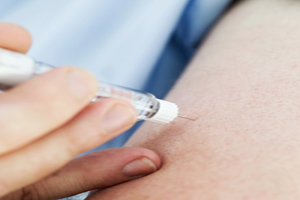The DASH Diet: Not Just For High Blood Pressure?
It can be hard to choose the best meal plan for you when there are so many options. You may have friends or family members that lost weight, controlled their blood glucose levels, or lowered their blood pressure by cutting out certain foods.
Low-carbohydrate (carb), low-salt, and low-fat meal plans can all be helpful for different people with different health issues, but everyone’s needs are unique. If you want to try an eating plan that has been shown to be safe and effective for most people, you might want to talk to your healthcare provider about the DASH diet.
Who should try the DASH diet?
DASH stands for “Dietary Approaches to Stop Hypertension.” As its name suggests, it is a healthy eating plan that was created especially for people with high blood pressure. It was developed by the National Heart, Lung, and Blood Institute.
According to a study that was published last year, the DASH diet has been shown to lower blood pressure and help people lose weight. Together, these factors can lower your risk of heart disease, and help you control your diabetes. The diet is even more helpful for people with high blood pressure if they eat the version that is lower in sodium (salt). It can also help those who are at risk for heart problems, like people who are obese, have high triglycerides (a type of blood fat), or have diabetes.
What can I eat on DASH?
The DASH diet is similar to the USDA’s Food Plate plan. You can eat lots of vegetables, fruit, whole grains, beans, lean meats, fish, and low-fat dairy. Because packaged, processed foods tend to be high in salt, the plan focuses on whole foods you can prepare at home. DASH is also low in fat and sugar, with very few sweets allowed.
The plan is high in fiber, calcium and potassium, which can help lower your blood pressure. Because you eat a wide variety of foods, you will get a good amount of vitamins and minerals to help keep you healthy.
Can the diet be harmful?
Maybe. Researchers found that while the DASH diet can lower your LDL (bad) cholesterol, it can also lower your HDL (good) cholesterol levels. HDL cholesterol is a type of blood fat that helps prevent heart attacks and strokes. It also lowers inflammation, which is your body’s response to injuries and infections. People who have constant, low-level inflammation tend to be unhealthy overall, and more likely to have problems like diabetes, psoriasis, allergies and arthritis.
Some doctors believe DASH lowers HDL cholesterol because the fat content is very low. Healthy fats like those found in olive oil, almonds, walnuts, avocados, and fish like mackerel, salmon, and sardines, are known to help raise HDL cholesterol levels. If your HDL levels are already low (less than 40 mg/dL for men, or less than 50 mg/dL for women), you might want to include more healthy fats in your eating plan than DASH suggests.
The take home message
The DASH diet focuses on whole, unprocessed fruits, vegetables, grains, dairy and lean meats, with very little fat, sugar and salt. This eating pattern can help some people with diabetes control their blood glucose levels and weight. But, it might be too low in fat or salt for others, and researchers aren’t sure if the weight loss will last long-term. You should always talk to your healthcare provider if you’re thinking about changing your eating plan, so you can decide together what’s best for you.
Reviewed by Robert Ehrman, MD




